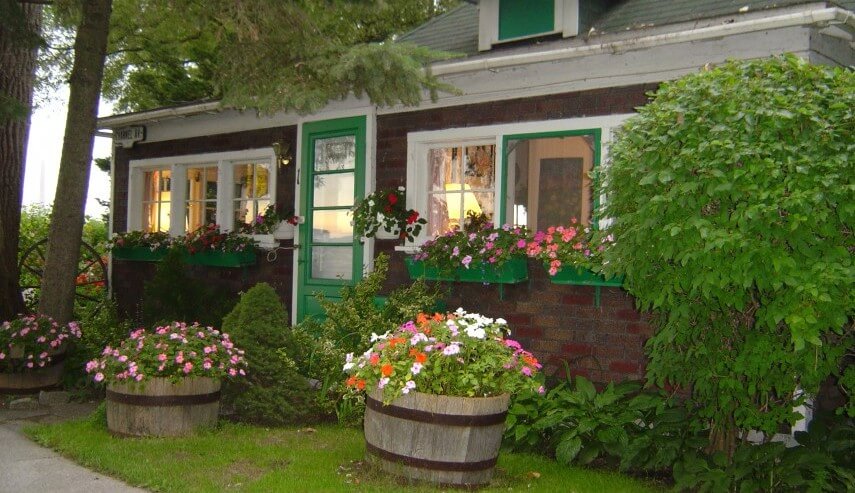A clean and healthy environment is fundamental for a fulfilling and vibrant life. It begins with ensuring that your home is a sanctuary that nurtures well-being. BlogNows highlights specific elements to prioritize when constructing a home to guarantee a healthy living space.
Natural air & light
Fostering a healthy living environment within the confines of our homes is a multifaceted endeavor that begins with conscientious attention to two fundamental elements: abundant natural light and efficient ventilation. These foundational aspects play an integral role in creating an environment that is not just aesthetically pleasing but also conducive to promoting physical well-being and mental clarity.
At the core of a well-thought-out home design lies a deliberate emphasis on maximizing the benefits of natural light. This emphasis extends beyond mere illumination to encompass the broader benefits that sunlight brings into our living spaces. By strategically minimizing the reliance on artificial lighting during daylight hours, an ideal home design prioritizes the integration of an array of doors and windows. This strategic layout not only allows for the seamless flow of sunlight but also facilitates the circulation of fresh air, promoting a sense of vitality and rejuvenation within the home.
Sunlight, beyond being a source of illumination, assumes a multifaceted role in maintaining the integrity of a well-designed home environment. It acts as a natural shield against the intrusion of pests, effectively deterring common nuisances like termites. The exposure to sunlight in various parts of the home serves as a natural deterrent, creating an environment that is less hospitable to these unwelcome visitors. Furthermore, sunlight’s inherent disinfectant properties contribute significantly to the upkeep of a hygienic living space, playing a pivotal role in controlling potential sources of contamination and fostering an atmosphere of cleanliness and healthfulness.
The strategic harnessing of sunlight within the framework of a home is not merely an architectural consideration but a conscious effort to create a space that promotes holistic well-being. By integrating ample natural light and ventilation into the design ethos, homeowners not only elevate the aesthetic appeal of their living spaces but also actively contribute to the creation of an environment that nurtures both physical health and emotional well-being. This thoughtful approach sets the stage for a home that transcends the traditional boundaries of shelter, evolving into a sanctuary that supports and enhances the quality of life for its inhabitants.
Hygiene & sanitation
Developing a healthy and hygienic living environment demands meticulous attention to detail, particularly concerning sanitation and waste management systems. During the construction phase of homes, a critical aspect that warrants priority is the comprehensive evaluation of piping and plumbing infrastructures to eradicate any potential havens for pests, which could otherwise proliferate and pose health risks.
The pivotal aspect of maintaining a sanitary living space lies in ensuring the integrity of sewage and waste outlets within a home. This entails a meticulous inspection and rigorous verification of the installation of piping and plumbing systems during the construction phase. By adhering to stringent quality checks and scrutinizing every component, the likelihood of creating environments conducive to pest infestation can be significantly minimized. This proactive stance serves as a robust defense against potential health hazards, fortifying the household against the detrimental effects of unsanitary conditions.
Beyond averting potential health risks, this proactive approach towards the maintenance of plumbing and waste systems contributes holistically to the overall cleanliness and well-being of the household. By prioritizing the thorough assessment and validation of these fundamental infrastructural elements, homeowners lay the groundwork for a living space that not only fosters a healthy environment but also ensures the sustained health and safety of its occupants.
Potted plants
Amidst the chaos and pollution of urban living, securing a breath of fresh air becomes a luxury. However, cultivating a revitalizing and healthy haven within our homes is well within our grasp. The introduction of potted plants throughout the living space doesn’t just bring in lush greenery but also acts as a natural air purifier, breathing new life into our homes.
Delve into the diverse array of plant choices available, each offering unique benefits beyond their aesthetic appeal. Fragrant blooms like jasmine and roses not only add a delightful aroma but also contribute to air purification. Plants with medicinal properties, such as tulsi, offer dual advantages—cleansing the air while potentially boosting our health. Explore the synergy of functionality and beauty by incorporating plants like bay leaves and mint, which not only add flavor to culinary creations but also serve as effective air purifiers.
Furthermore, resourceful homemakers often take an ingenious step by cultivating these plants, especially spices, directly within their kitchen spaces. This smart practice not only ensures a ready supply of fresh flavors for cooking but also actively contributes to a healthier indoor atmosphere. These seemingly small yet purposeful actions not only elevate the visual allure of our living spaces but also play a significant role in fostering a healthier and more rejuvenating home environment for all occupants.
Quality-check construction material
The extensive use of chemicals during the construction phase has far-reaching implications, potentially resulting in immediate allergic reactions and persistent health concerns for individuals inhabiting these spaces. This underscores the critical necessity of conducting a thorough and vigilant assessment of construction materials, with particular emphasis on elements like wood and fabric, to preclude any triggers that might provoke allergies.
Detail the potential health hazards associated with these chemical-laden materials and their impact on residents. Discuss the multifaceted repercussions, from immediate allergic responses to the compounded risks of long-term health issues due to prolonged exposure. Emphasize the importance of informed decision-making in selecting construction materials, highlighting the value of hypoallergenic and naturally sourced options in creating a safer living environment.
In contrast, draw attention to the prudent course of action involving a deliberate avoidance of widely mass-produced synthetic construction materials. These synthetic materials, often rife with hazardous components, pose significant health risks to occupants. In contrast, opting for eco-friendly and natural alternatives markedly diminishes the probability of exposure to detrimental chemicals, thus safeguarding the health and overall well-being of individuals inhabiting these constructed spaces.
Furthermore, expound upon the potential ecological impacts of using synthetic materials, elucidating how the adoption of natural and environmentally conscious alternatives not only fosters a healthier indoor setting but also contributes positively to the broader ecosystem. This conscious shift towards eco-friendly materials not only serves the immediate residents but also resonates with a larger environmental ethos, aligning with sustainable living practices and promoting a greener, healthier future.
By advocating for the adoption of natural, hypoallergenic, and eco-friendly construction materials, homeowners not only prioritize the well-being of their immediate environment but also partake in a collective endeavor towards sustainable, health-conscious living practices that benefit both present and future generations.
Solar installation
Promoting energy efficiency and sustainability within the realm of residential construction stands as a cornerstone in the pursuit of fostering healthy homes. This imperative transcends mere energy conservation, extending to the adoption of innovative, eco-friendly solutions like solar-powered installations. These sustainable technologies not only serve as catalysts for reducing environmental pollution but also wield a profound influence on the holistic health of individuals and communities.
Delve into the multifaceted benefits of prioritizing energy efficiency and renewable energy sources, particularly solar power, within home construction. Begin by elucidating how these initiatives drastically curtail the reliance on conventional electricity, thereby significantly mitigating the carbon footprint associated with traditional energy sources. Emphasize how this reduction in pollution directly contributes to the improvement of air quality and subsequently impacts respiratory health, enhancing the overall well-being of residents.
Moreover, the adoption of solar-powered installations encapsulates a broader commitment to environmental stewardship. Highlight the cumulative impact of widespread adoption of solar energy across communities, illustrating how individual actions collectively contribute to a larger societal good. Discuss how this collective effort fosters a cleaner and healthier environment, benefiting not only present but also future generations, by mitigating the adverse effects of climate change and promoting sustainable living practices.
Expand upon the potential economic benefits associated with transitioning to solar energy, exploring how the initial investment in solar-powered installations translates into long-term savings for homeowners. Discuss the viability of government incentives and tax rebates that incentivize the adoption of renewable energy, making it a financially prudent and socially responsible choice for homeowners.
Additionally, highlight the technological advancements and versatility of solar energy solutions, showcasing how they offer a scalable and adaptable approach applicable to diverse housing structures. This adaptability ensures that sustainable energy solutions can be seamlessly integrated into various architectural designs and geographical locations, making them a feasible option for a wide spectrum of homeowners.
By advocating for the integration of sustainable technologies like solar power in residential constructions, individuals not only champion a healthier living environment for themselves but also contribute to a global paradigm shift towards cleaner, greener energy solutions. This proactive embrace of renewable energy sources aligns with a broader societal commitment to environmental sustainability and offers a tangible pathway towards a healthier, more resilient future for all.










